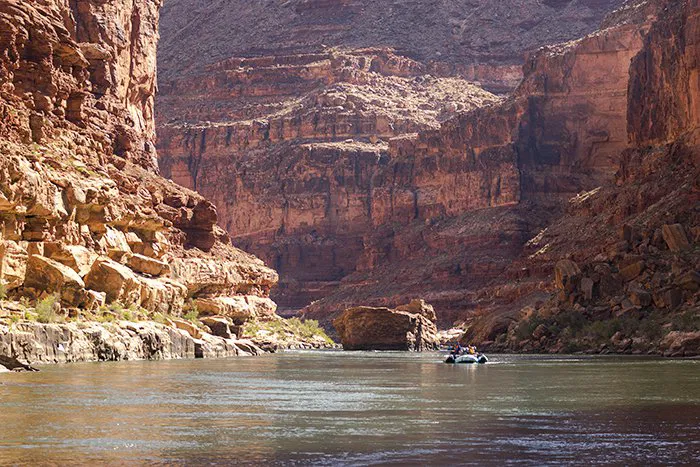Visiting the Grand Canyon
The Grand Canyon is located in northern Arizona in the southwestern United States. It is truly an awesome sight: 277 miles long, up to 18 miles wide, and up to a mile deep. Because of its size you can see out across the canyon for miles, look down and see the Colorado River in some places, or see side canyons that extend out of range or beyond your line of sight. If the sun is rising or setting, you can see shadows creep across the canyon walls or watch the shadows fade and reveal bright red, gray, or white rocks on the cliff faces. You can even stand on the rim and watch birds fly below you, or maybe you’ll be able to see a bighorn sheep climbing the rocks.
There are opportunities to whitewater raft the Colorado River at the bottom of the canyon or ride mules down from the rim into the canyon. Some private stables operate horseback rides into the canyon too. Others choose to hike or just stand at the North or South Rim and look out over the many plateaus of the Grand Canyon. Bus and bicycle tours are also available. There are even airplane and helicopter tours of the Grand Canyon for those who are more adventurous and not afraid of flying.

Image by Answers magazine, July–August 2017, pp 50–67.
The Colorado River winds 277 miles through some of the most magnificent scenery on earth. There are dramatic testimonies of a recent, worldwide Flood, such as the lack of debris at the river’s edge.
But the truly magnificent part of the Grand Canyon is looking at it as evidence of the rapidly deposited sediment layers during Noah’s flood followed by powerful and rapid erosion by huge volumes of moving water as the flood receded. Canyons don’t require millions of years to form with a river slowly carving away the rock. The Grand Canyon is evidence of what a lot of water over a short period of time can do.
Related Media
Canyons
- © 2024 Answers in Genesis
- Privacy Policy
- Contact
- About
